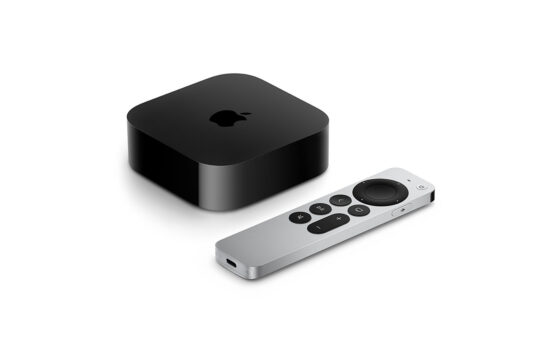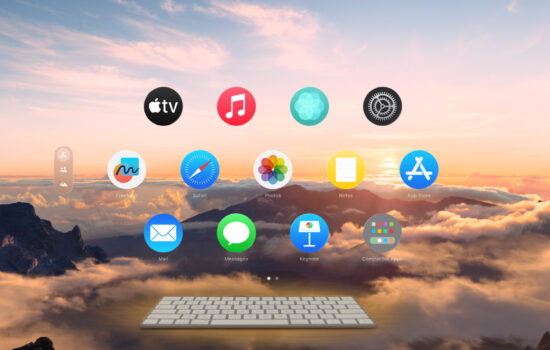Earlier this morning, Apple introduced the first major new product for 2025, which is the iPhone 16e – the newest addition to the iPhone 16 lineup, with its debut, Apple also killed off several things in the iPhone lineup. Here are the several things that Apple killed off for the iPhone lineup:
- Both the iPhone SE (3rd generation), iPhone 14, and iPhone 14 Plus have now been discontinued by Apple as the iPhone 16e now serves as the replacement for all of those phones. For comparison, the iPhone SE 3 and the iPhone 14 models had the A15 chip (4-core GPU) and A15 chip (5-core GPU), respectively, and the new iPhone 16e, whose design is based on the iPhone 14’s design, has the updated A18 chip although it’s a binned variant with a 4-core GPU.
- Now that the iPhone SE 3 has been replaced by the iPhone 16e, this marks the end of an era for the “SE” branding overall as Apple now goes with a different naming scheme to market its more budget-oriented options. The original iPhone SE was introduced in March 2016, and its design and hardware were based on the iPhone 5s and iPhone 6s, respectively. Both the second and third-generation iPhone SE featured the same design as that of the iPhone 8, and they used the same chip generation as the iPhone 11 and iPhone 13, respectively.
- The previous iPhone SE 3 was offered in three colors – Starlight, Midnight, and (PRODUCT)RED. This new iPhone 16 now comes in just two simple colors – white and black. This officially marks the end of an era for all (PRODUCT)RED devices that Apple sold to this day. Apple introduced the (RED) option to the iPhone lineup starting with the iPhone 7 back in 2017, but the company stopped offering that option starting with the iPhone 15 and iPhone 15 Plus, and now that the Apple Watch Series 10 aluminum series dropped the (RED) option too, it looks like Apple’s collaboration with (RED) is coming to a close. Apple still sells (RED) Silicone cases for both theiPhone 14 and iPhone 14 Plus as of now, but it’s likely that those cases will be out the door soon as Apple tends to deplete its cases for iPhones it no longer sells.
- In case you forgot, Apple continued to sell the measly 64GB storage option on an iPhone until today with the iPhone SE 3. With more modern iPhones (and most if not all Android smartphones) now starting at least 128GB of storage for years, 64GB of storage remains laughable to this day, especially with today’s era where advanced software features (not to mention more Apple Intelligence features down the road), applications, and higher-res photos/videos start to take up more storage than ever before. Thankfully, the new iPhone 16e now starts with 128GB of storage at just $599 (the previous SE 3’s 128GB tier cost $479).
- For years, the iPhone lineup stuck with Lightning even after the Mac and iPad started to adopt USB-C for versatile connectivity. Apple started transitioning the iPhone to USB-C starting with the iPhone 15 series, and with the AirPods Max and Apple’s Magic Accessories making that switch recently, this left only the iPhone SE 3, iPhone 14, and iPhone 14 Plus as Apple’s last products that featured a Lightning connector. With the iPhone 16e replacing all of those three phones, Apple has finally put the Lightning port to rest across all the products that Apple sells.
- Apple started adopting OLED displays for the iPhone starting with the iPhone X in 2017, and as Apple introduced newer iPhones with OLED displays, and even many budget Android phones featuring this advancement in display technology, the iPhone SE 3 started to show its age with its relatively tiny 4.7-inch LCD display. In fact, it was the only iPhone model in the lineup until today to still feature an LCD display. Now that the iPhone 16e replaced the antiquated iPhone SE 3 in the lineup, all models in Apple’s iPhone lineup have been standardized with advanced OLED displays for more accurate colors, brighter highlights, deeper blacks, and substantially improved contrast ratios overall.
- You can also say goodbye to small iPhones now as the smallest iPhone screen-size you can get now is a 6.1-inch screen. The original iPhone started with a 3.5-inch screen, and Apple pretty much refused to enlarge the iPhone’s screen because it thought that screen size was perfect for one-hand usability. Apple did make the screen taller with a 4-inch screen starting with the iPhone 5, but with several Android competitors coming out with larger screens, Apple just caved in by offering larger screens starting with the iPhone 6 (4.7-inch) and iPhone 6 Plus (5.5-inch). Since then, Apple kept the smaller form factor around with the iPhone SE, and the company even offered a smaller flagship phone with the iPhone 12 mini and iPhone 13 mini. However, Apple ditched the mini starting with the iPhone 14 and iPhone 14 Plus, and now Apple’s “true” smaller phones are now a thing of the past.
- Apple reinvented the phone with the original iPhone in 2007, and the Home Button was a hallmark feature that made the iPhone stand out well against other “smartphones” for its ease-of-use navigation. Since then, newer iPhone and even iPad models featured the Home Button for ten years until the introduction of the iPhone X in 2017, where Apple went all out with an all-screen design that ditched the Home Button in favor of the swipe gestures. The following year, the iPad followed suit with a major redesign for the iPad Pro in 2018, and that design would trickle down to other more affordable models in the iPad lineup. So all iPad models today no longer have a Home Button, and the iPhone 16e replacing the iPhone SE 3 marks the end of an era for a key feature that dated all the way back to the original iPhone.
- The Home Button also became the original home for Touch ID. This is Apple’s first biometric security feature thatwas introduced for any of its products. This technology was introduced on the iPhone 5s in 2013, which allowed users to quickly log into their iPhone and other websites, make purchases via Apple Pay, and authenticate access to personal apps such as their bank accounts or their credentials/passwords. Touch ID also made its way to the iPad starting with the iPad Air 2 and iPad mini 3. The second-generation Touch ID sensor for faster authentication was introduced on the iPhone 6s and iPhone 6s Plus; however, with the phaseout of the Home Button starting with the iPhone X, Face ID started to replace Touch ID as the only biometric feature to authenticate on an iPhone. Face ID also replaced Touch ID in the iPad Pro lineup starting with the 2018 models; however, Face ID has remained exclusive to only the iPad Pro models. As Apple’s lower-end iPads started to adopt the more modern all-screen design, the top button became the new home for the Touch ID sensor, and the Mac has never adopted Face ID as Touch ID has been embedded in the Magic Keyboard for both MacBooks and Mac desktops. So now every model in the iPhone lineup is equipped with Face ID technology.
As you can see, Apple has killed off so many aspects with the launch of the iPhone 16e, and we can finally say goodbye to several of those features that date back to even the original iPhone. But maybe down in the road, those features may give you that nostalgic feeling. Will you miss any of the features we listed above? Sound off in the comments below, and follow us on X for more Apple-related news and coverage of the iPhone 16e.








